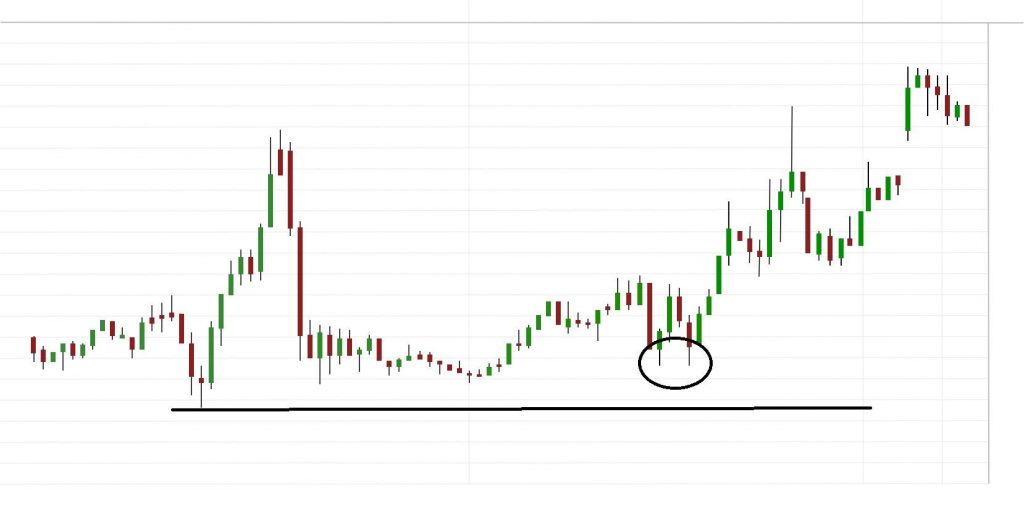Day trading guide
Day trading is a widely practiced short-term trading method that involves buying and selling financial assets within the same day to benefit from small price fluctuations.
With day trading, you can operate independently, whether from home, an office, or even while on the move, thanks to mobile technology. However, day trading isn’t suited for everyone, and it’s essential to know the ins and outs before entering the financial markets. This guide covers day trading in the UK, different trading techniques, and the mindset required for success, along with helpful strategies to improve your trading game.
Understanding Day Trading
Day trading involves short-term buying and selling of financial instruments, aiming to close all positions by the end of the trading day. This trading style has gained popularity in the UK over recent years.
The rise of technology, with high-speed internet and mobile access, has made real-time market data readily available, enabling more people to explore day trading as a way to capture intraday price movements.
Which strategies should you consider? Should you stick to simple methods or try something more complex?
Using Technical Analysis in Day Trading
Most day traders rely on technical analysis, focusing on price charts, like candlestick charts, and often prefer a minimalist approach. Rather than cluttering charts with numerous indicators, they concentrate on price behavior, known as “price action trading.” This approach uses historical price points as reference levels to guide future trades.
For many day traders, highs and lows from the previous trading day serve as crucial reference points. This makes sense, as a previous high might suggest an area where sellers re-entered the market, pushing the price down, signaling a perceived overvaluation. Meanwhile, the previous day’s low could indicate where buyers found value, suggesting a potential support level for the next day’s trading.
Popular Day Trading Strategies
Day trading strategies differ from long-term trading as they focus on shorter market movements rather than trends lasting days or weeks. In the fast-paced trading environment, day traders need to stay focused, especially in highly volatile markets such as oil trading.
Some common intraday strategies include:
- Trend-following
- Mean reversion
- Scalping
- Momentum trading
Though no strategy guarantees success, even straightforward approaches can help identify trades with favorable risk and reward ratios throughout the day. Some traders may also use unsuccessful trades as signals for new opportunities, such as identifying a trend shift if a level breaks, creating fresh profit potential. Success with futures trading can even lead to funded trading accounts if performance exceeds certain benchmarks.
Example Day Trade: GBP/USD
Consider a UK day trader analyzing GBP/USD on the morning of April 22. By observing the previous day’s high and low, traders note that when the price fell to 1.4300 on April 21, buyers stepped in. Although uncertain, there’s a reasonable expectation that this level may attract buyers again on April 22.

Leveraging Support and Resistance in Day Trading
The chart example illustrates this strategy in action. Over a few hours, the GBP/USD rate moved near 1.4320 twice, a level where demand appeared the previous day. A day trader might consider buying, based on prior demand near this support level.
Using defined support and resistance levels not only aids in planning entries but also in managing risk. While profit is the goal, limiting losses is crucial. For example, if GBP/USD drops below 1.4300, it might suggest a shift in market sentiment, prompting an early exit to minimize losses.
Key Tips for Day Trading Success
Follow Your Own Rules
Consistency is a cornerstone of successful trading. Define a set of rules to guide your trades and follow them diligently. Periodically, review your performance to identify any patterns that may negatively impact your results, especially given day trading’s quick pace.
Effective Money Management
Managing funds wisely is essential for day traders. Those aiming for long-term success need a well-defined risk-reward approach. Making sure your gains consistently outweigh losses is a key principle for sustainable profitability.
The Mental Side of Day Trading
- Make informed decisions quickly: Confidently act on well-researched trades.
- Maintain calmness: If facing a loss, stick to your plan, and prepare for worst-case scenarios to stay balanced.
- Avoid unsolicited opinions: For tailored advice, consult professionals rather than casual opinions from other traders.
- Exercise patience: Avoid trading just to stay active. Familiarity with the market will make timing decisions more intuitive.
- Monitor stress levels: If stress rises, take a break as it may cloud judgment.
- Adapt as needed: Flexibility is essential, as market conditions can shift rapidly.
- Set clear focus on markets and timeframes: Having a specific focus helps navigate the market’s fast pace.
- Secure profits confidently: Don’t hesitate to lock in gains; even if the trend continues, staying profitable is key.
- Document trade rationales: Keeping a record of your trade decisions enhances learning over time.
- Evaluate progress regularly: Review monthly to identify improvements and work toward consistent results.

Practice on Our Day Trading Platform
Our Next Generation day trading platform provides access to technical indicators, social trading insights, and expert analysis. Beginners can benefit from these resources, gaining valuable strategies and tips.
We also support the MetaTrader 4 platform, ideal for those already accustomed to its features. Selecting a platform suited to your style is vital, so check out our comparison guide on platform features, tools, and pricing.
Getting Started with Day Trading
To begin day trading on thousands of financial instruments, open an account with us. Our trading costs page provides details on spreads, margins, commissions, and holding fees – all essential factors for day traders to consider before opening trades.
Day Trading Summary
Day trading is a short-term strategy that captures small price changes and avoids overnight risks. Most day traders utilize price charts and technical analysis to refine their strategies. Regardless of approach, fundamental principles like risk management and emotional control are essential to navigating the high-speed, high-stakes world of day trading.